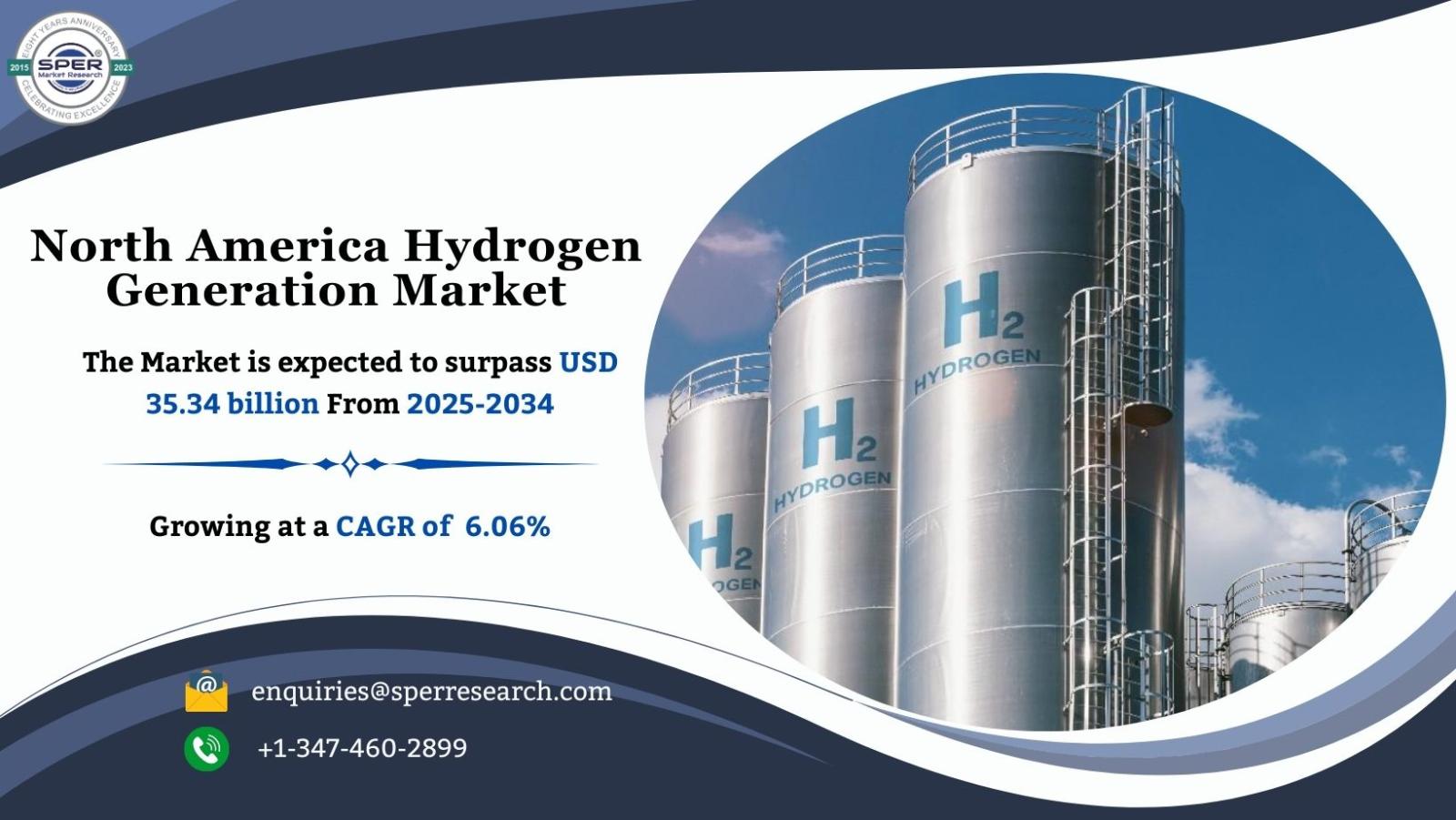Notifications

4 minutes, 15 seconds
-12 Views 0 Comments 0 Likes 0 Reviews

It is the process of producing hydrogen gas, usually by electrolysis or chemical processes, using a variety of feedstocks or energy sources. Both conventional techniques and more recent, environmentally friendly ones, such as electrolysis using renewable energy sources, can be used in this process. Due to its versatility and cleanliness, hydrogen is highly sought after in a number of industries, such as energy storage, chemicals, transportation, and refining.
According to SPER market research, ‘North America Hydrogen Generation Market Size- By Delivery Mode, By Process, By Application - Regional Outlook, Competitive Strategies and Segment Forecast to 2034’ state that the North America Hydrogen Generation Market is predicted to reach 35.34 billion by 2034 with a CAGR of 6.06%.
Drivers:
The market is primarily driven by rising demand for clean energy solutions that reduce greenhouse gas emissions while mitigating climate change. Governments throughout the world are supporting hydrogen as a sustainable energy carrier through supportive legislation, subsidies, and infrastructure development, which is propelling the industry. Technological advances in hydrogen production, including as electrolysis and carbon capture, have greatly increased efficiency and cost-effectiveness, propelling industry expansion. Rising usage in areas such as transportation, power generation, and chemicals boosts demand, while hydrogen's expanding incorporation into renewable energy projects increases its market appeal.
Request a Free Sample Report: https://www.sperresearch.com/report-store/north-america-hydrogen-generation-market?sample=1
Restraints:
The high construction and operating costs of hydrogen production plants or biorefineries make it impossible for hydrogen generation to compete with fossil fuels. The investment covers the costs of biorefinery installation, procurement, testing, and maintenance, as well as feedstock expenditures. Generating hydrogen utilising modern technological systems without prior experience or relevant historical data is a capital-intensive activity. It is also required that processes with a high energy consumption employ specialised energy generation equipment in order to co-produce heat or electricity. All of these considerations make investing in hydrogen generating expensive and unpleasant.
The Canadian hydrogen generation market is expected to lead the industry in 2024 due to its rich renewable energy resources, rising demand from various end-use sectors, and supporting government regulations. Strong R&D capabilities across the economy, together with large renewable energy resources like as hydroelectric power, wind energy, solar power, and biomass, will ensure a consistent and sustainable supply of electricity for electrolysis. Some of the key market players are Air Products and Chemicals, Inc, Ballard Power Systems, CALORIC, CF Industries, Cummins Inc, and others.
For More Information, refer to below link: –
North America Hydrogen Generation Market Size
Related Reports:
Follow Us –
LinkedIn | Instagram | Facebook | Twitter
Contact Us:
Sara Lopes, Business Consultant — USA
SPER Market Research
enquiries@sperresearch.com
+1–347–460–2899
North America Hydrogen Generation Market North America Hydrogen Generation Market Share North America Hydrogen Generation Market Size North America Hydrogen Generation Market Revenue North America Hydrogen Generation Market Analysis North America Hydrogen Generation Market Segmentation North America Hydrogen Generation Market Future Outlook North America Hydrogen Generation Market Competition North America Hydrogen Generation Market forecast North America Hydrogen Generation Market CAGR Status

